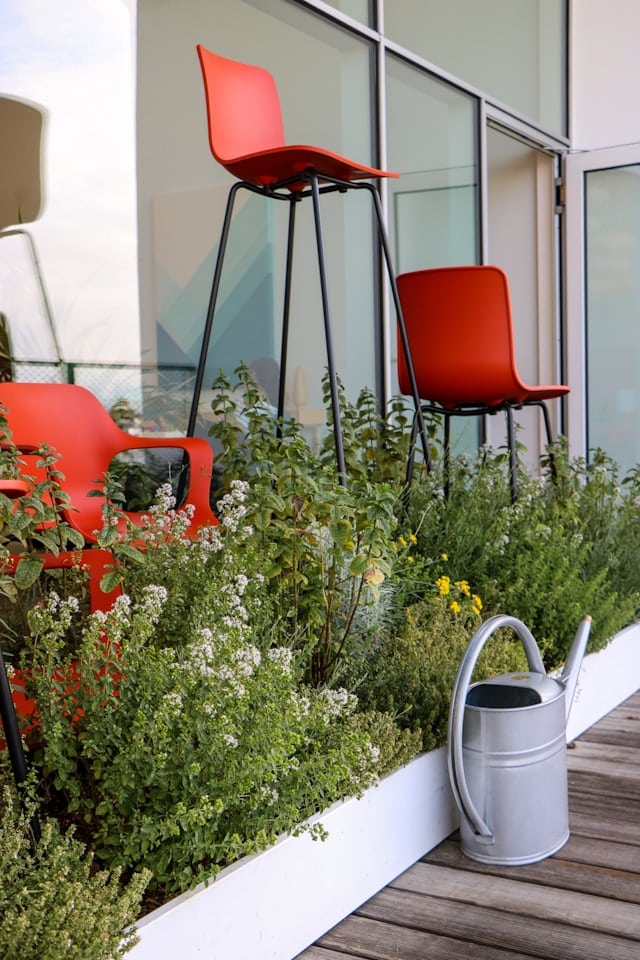What’s the Best Way to Set Up a Self-Sufficient Potting Station for Urban Gardeners?

Urban gardening has surged in popularity in recent years. Plant enthusiasts are continuously exploring ways to grow their gardens in limited spaces. Many have found joy in setting up a self-sufficient potting station to keep their plant life thriving. But what’s the best way to set up one? Which plants should you start with? How do you make sure you have sufficient supplies? To answer these questions, we delve into the world of gardening, presenting to you a comprehensive guide.
Picking the Right Plants for your Garden
Before deciding on what to grow, understand the constraints of an urban garden. Space is a premium, and sunlight can be limited. Therefore, choose plants that are resistant to these conditions. Vegetables like lettuce, spinach, and radishes are great starters. They are easy to grow and require less space. Herbs are also an excellent choice as they grow well in pots and can be used in your everyday cooking.
A lire aussi : How to Utilize Vertical Space for Storage in a Studio Apartment with High Ceilings?
When deciding on what to grow, also consider the time of year. Some plants prefer cooler weather, while others thrive in heat. The key is to research and understand the life cycle of each plant. Always remember that varying your plants not only keeps your garden visually interesting but also contributes to a healthier ecosystem.
Setting Up Your Potting Station
Setting up a practical and efficient potting station is the next step. The station is where you will start seeds, transplant seedlings, and maintain your plants. It should be a space that allows you to perform these tasks comfortably and efficiently. A good potting station includes a work table, storage for your tools and supplies, and shelves for your plants.
A lire aussi : What Are the Best Plants for Creating a Serene Meditation Corner in a Busy Household?
Amazon offers a variety of potting benches that can be a good addition to your station. The Best Choice Products Outdoor Garden Wooden Potting Bench is a great option, offering ample workspace and storage. Remember, your potting station needs to be a place where you can get your hands dirty, so make sure it’s comfortable and functional.
The Right Soil for Healthy Plants
Soil is far more than just dirt; it’s a complex ecosystem that sustains your plants. The best way to ensure that your plants are getting the proper nutrients is to provide them with high-quality soil. There are many types of soil available, each with its unique composition of nutrients.
For most vegetables and herbs, a well-draining soil that is rich in organic matter is ideal. Many gardeners recommend potting mixes such as FoxFarm’s Happy Frog Potting Soil or Miracle-Gro’s Potting Mix, both available on Amazon.
Aside from picking the right soil, it’s also crucial to understand how to maintain it. Composting is a practical way to recycle organic waste and improve your soil’s health. Regularly adding compost to your garden beds will keep your soil fertile and your plants happy.
Keeping Your Plants Watered
Water is undoubtedly a crucial aspect of gardening. But providing your plants with the right amount of water can be a tricky task. Overwatering can lead to root rot, while underwatering can cause your plants to wilt and die.
A self-watering system can be a godsend for urban gardeners. These systems provide a steady supply of water to your plants, reducing the risk of underwatering or overwatering. Many systems, like the Gardenix Decor Self Watering planter from Amazon, are compact and ideal for small spaces. Self-watering systems also save time and effort, making them a significant investment for urban gardeners.
Growing Your Own Food
There’s nothing quite like the satisfaction of eating food you’ve grown yourself. Urban gardening provides a way for city dwellers to cultivate their own fresh produce. While you may not be able to grow a full vegetable garden in your apartment, there are plenty of plants that can provide you with a steady supply of fresh food.
Good choices include lettuce, spinach, tomatoes, herbs, and peppers. These plants can be grown in containers and don’t require a lot of space. Plus, nothing tastes quite as good as a salad made from greens you’ve grown yourself.
Overall, creating a self-sufficient potting station allows you to engage with nature in an urban setting. It provides a sense of accomplishment and improves your quality of life. So why not start today? Happy gardening!
Implementing a Mini Greenhouse for Year-Round Growth
Urban gardeners often face the challenge of season changes and unfavorable weather conditions. The solution to this problem might be a mini greenhouse. This tool is a fantastic way to extend the growing season and protect your plants from frost, pests, and diseases.
A mini greenhouse also allows you to control the temperature and humidity levels, which significantly improves the efficiency of your gardening. It’s especially helpful when starting seeds as it provides the right environment for germination and early growth. You can either buy one online, such as the Home-Complete Mini Greenhouse from Amazon, or you can build one yourself using food-grade materials.
Another advantage of a mini greenhouse is the ability to grow food all year round. If you select your plants smartly, you can have fresh produce even through winter. Cool season vegetables like kale, broccoli, and spinach are good options for the cooler months. These leafy greens are not only easy to grow but are also packed with nutrients.
Remember to keep an eye on your plants and adjust the conditions as needed. You should regularly check the temperature, water levels, and watch out for common diseases. Proper care will ensure that your mini greenhouse is truly a year-round, self-sufficient, urban gardening powerhouse.
Harnessing Vertical Space in Urban Gardening
In urban environments where horizontal space is limited, vertical gardening can be a game-changer. This method involves growing plants up rather than out, making the most out of your available space. Best of all, it’s a strategy that can be applied to both outdoors and indoors gardening.
Vertical garden structures can be as simple as a trellis or as complex as a living wall. You can purchase ready-made vertical garden kits from Amazon, like the Algreen 34002 Garden View. Alternatively, you can DIY a vertical garden using materials like pallets, trellises, or even shoe organizers.
Climbing plants like cucumbers, tomatoes, and peas are perfect for vertical gardening. However, you can also plant herbs, edible flowers, and even strawberries in vertical containers. Remember to place your vertical garden in a spot where the plants receive enough sunlight.
It’s also vital to ensure proper drainage to prevent the plant roots from being waterlogged. You can do this by making holes at the bottom of your containers or using a mix of garden soil and perlite for improved drainage.
Conclusion: Grow towards Self-Sufficiency
Urban gardening is not only about growing your food but also about sustainability and self-sufficiency. Even in the busiest cities of the United States, people are cultivating their produce and enjoying the rewards. With the right tools and techniques, anyone can set up a self-sufficient potting station.
Starting with easy-to-grow vegetables and herbs, setting up an efficient potting station, understanding the importance of good soil, and making smart watering choices can lead to an abundant vegetable garden. Implementing a mini greenhouse and harnessing vertical space can further enhance your gardening experience, allowing you to grow food year-round.
Remember that gardening is a journey, not a destination. So, don’t be disheartened if your first few attempts don’t go as planned. Keep learning, experimenting, and growing. With time, patience, and a bit of green thumb magic, you’ll create an urban oasis that yields fresh, homegrown food right from your potting station. Happy gardening!
